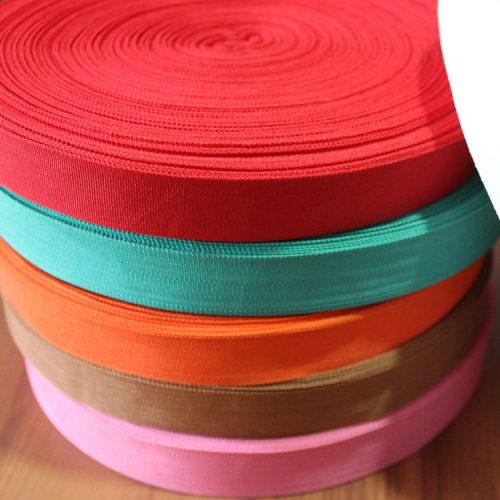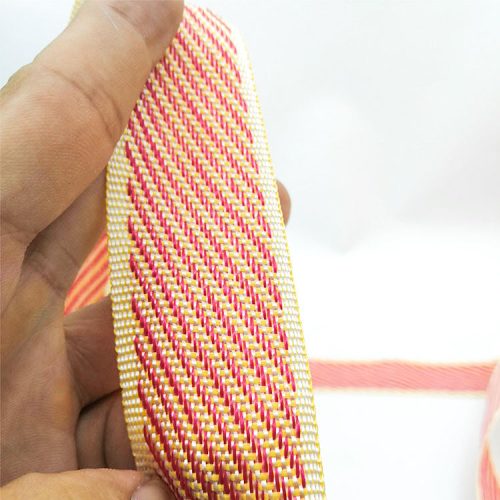Working with cotton webbing can be a rewarding endeavor, but it does require some specific techniques due to the material’s characteristics. Here are some sewing tips to help you effectively work with cotton webbing:
- Choose the Right Needle and Thread:
- Use a heavy-duty needle, such as a denim or upholstery needle, to handle the thickness of the cotton webbing.
- Opt for a strong and durable thread, like nylon or polyester, to ensure your stitches hold up well over time.
- Prewash and Press:
- Prewash the cotton webbing to remove any sizing or residue that might affect its appearance or texture.
- Press the cotton webbing using a warm iron to remove wrinkles and ensure a smoother sewing process.
- Use a Walking Foot:
- A walking foot attachment on your sewing machine helps feed the fabric evenly, preventing layers from shifting and ensuring a more even stitch.
- Secure the Ends:
- Cotton webbing can fray, so consider sealing the ends with clear nail polish or a fray check product to prevent unraveling.
- Practice Stitch Length and Tension:
- Experiment with stitch length and tension on scrap pieces of cotton webbing to find the settings that provide secure stitches without causing puckering or distortion.
- Choose the Right Seam Type:
- Depending on your project, you might use a straight stitch, zigzag stitch, or even a reinforced box stitch for extra strength at stress points.
- Pinning and Clipping:
- Use clips rather than pins to hold layers of cotton webbing together. Pins can leave permanent holes in the webbing.
- Alternatively, use double-sided tape to temporarily hold the layers in place.
- Practice Sewing Corners:
- When sewing corners or turning points, lift the presser foot and pivot the fabric, making sure your needle is down before you start sewing again.
- Finishing Seams:
- If the project allows, consider finishing the seams by folding the edges of the cotton webbing under and stitching along the edge for a neat finish.
- Test on Scrap Pieces:
- Before sewing on your main project, always practice on scrap pieces of cotton webbing to get a feel for the fabric and the sewing machine settings.
- Take Breaks and Patience:
- Sewing heavy materials like cotton webbing can be tiring for your machine and you. Take breaks and go slowly to ensure accurate and secure stitches.
- Maintain Your Machine:
- Regularly clean and oil your sewing machine to ensure it operates smoothly and efficiently, especially when working with heavier fabrics like cotton webbing.
Remember that sewing with cotton webbing might require a bit of adjustment and experimentation, but with practice, you’ll become more comfortable and confident in working with this versatile material.


